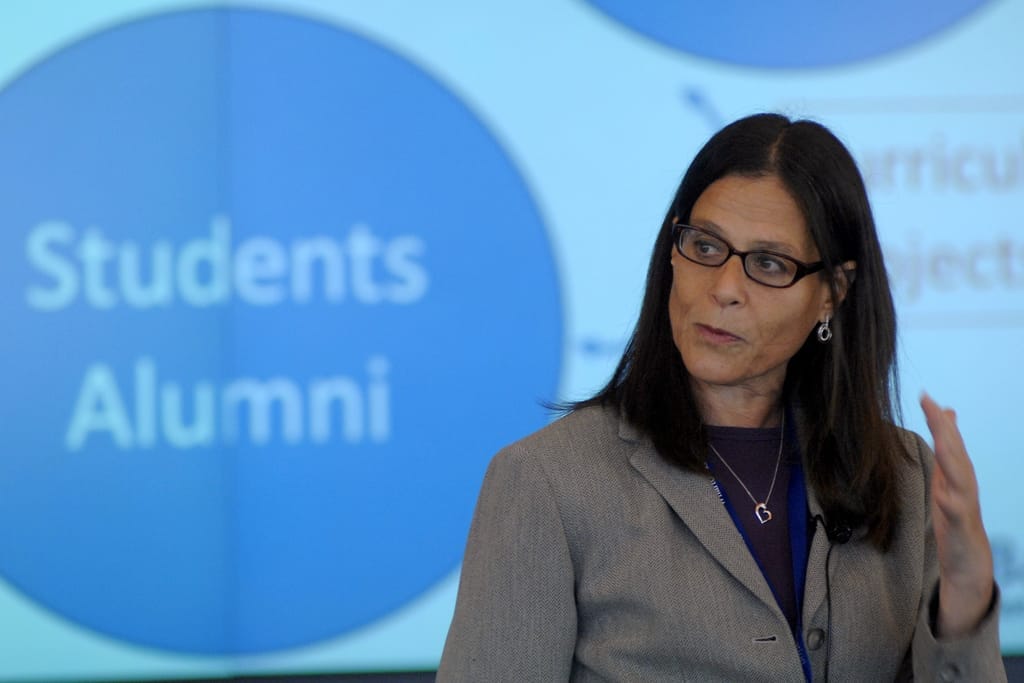Today, retailers reach shoppers through a range of sales and communication channels, from bricks-and-mortar and online stores to shopping apps, flash sale sites and Facebook and Twitter.
According to participants at a recent academic-industry conference on multichannel retailing and social media hosted by Wharton’s Jay H. Baker Retailing Center, retailers increasingly consider channel interactions in order to provide a cohesive experience for customers. They are integrating channels operationally (e.g., offline returns of online purchases) and managerially (e.g., incentive systems).
Multichannel retailers are also trying to leverage online executives’ data and digital expertise in their offline business, as they know those experts can help enhance offline data systems and integrate interactive technology, online reviews and recommender systems into offline stores. A case in point is conference panelist Denise Incandela, WG’92, president of Saks Direct and chief marketing officer of Saks Fifth Avenue, who was promoted to the CMO role after building Saks’s direct business.

Denise Incandela, WG’92, president of Saks Direct and chief marketing officer of Saks Fifth Avenue, speaks during her session at the Baker Retailing Center conference.
Online businesses rarely operate purely virtually, panelist Tim Laseter, practice professor at Darden, pointed out. For instance, luxury fashion retailer Moda Operandi offers personal stylists and gives customers branded keepsake apparel boxes and garment bags, as well as hand-drawn illustrations showing its best customers wearing items they bought, reported CEO Aslaug Magnusdottir. Tim Riley, director of online experience at prescription glasses vendor Warby Parker, talked about the company’s “photo walk,” which gathered 120 customers posing in novelty glasses for pictures to be posted on Instagram.
Still, building difference between online and offline brands is acceptable, even encouraged. Based on his research, MIT’s Erik Brynjolfsson, a keynote speaker, recommended focusing more on niche products online because popular items are widely available in offline stores.
Social media provides an opportunity for customer engagement, not necessarily online sales. As Dan Clifford, vice president of marketing at Victoria’s Secret put it, social media is a way to “connect rather than commercialize.” Companies also want to inspire customer-generated content, for example through customer videos, because they typically receive more attention than company-produced content, explained Dennis McEniry, president of the Estee Lauder Cos. Online.
Multichannel strategies raise important pricing questions. Panelist Kusum Ailawadi, a marketing professor at Dartmouth, pointed out that online customers’ price sensitivity might not necessarily be higher and wondered whether online prices might sometimes be discounted unnecessarily. Retailers are also asking about how retailers’ online pricing affects manufacturers’ pricing, how they should respond to Amazon’s pricing, and how online sales taxes will impact online and offline sales.
The “Multichannel Shopping” conference took place on Feb. 14, 2012, on Wharton’s campus. Barbara Kahn, Patty and Jay H. Baker Professor and director of the Jay H. Baker Retailing Center, served as conference chair; David Bell, Xinmei Zhang and Yongge Dai Professor and Professor of Marketing, and Kartik Hosanagar, associate professor, served as program chairs and panel moderators, and Len Lodish, the Samuel R. Harrell Professor, vice dean of social impact, and leader and co-founder of the Global Consulting Practicum, served as a panelist.
Editor’s note: View additional images of the “Multichannel Shopping” event at the Wharton Flickr site.


























